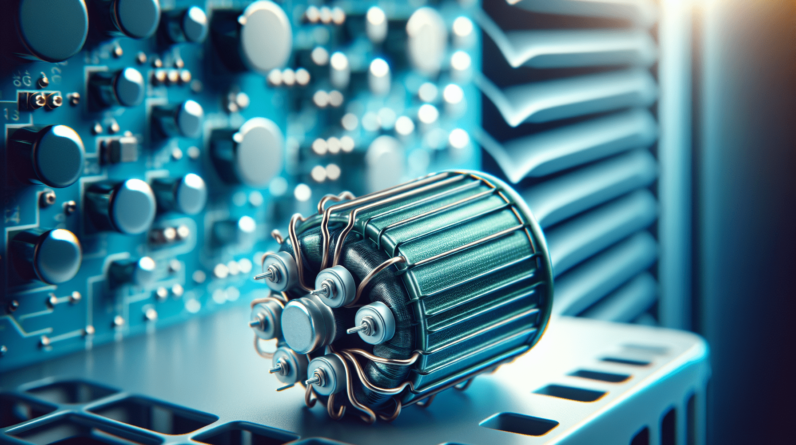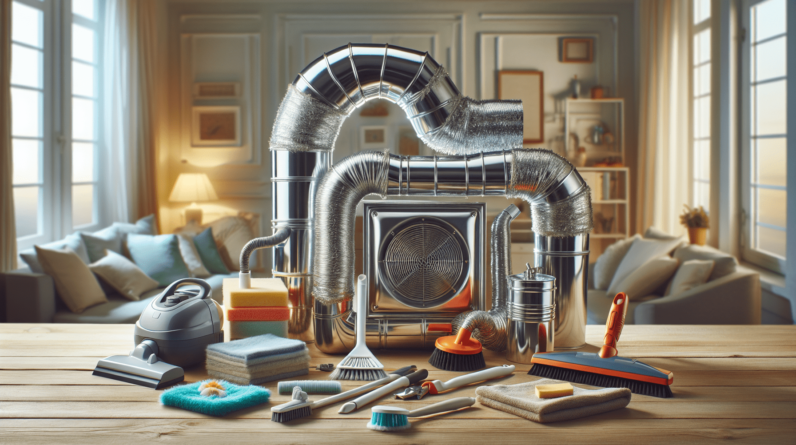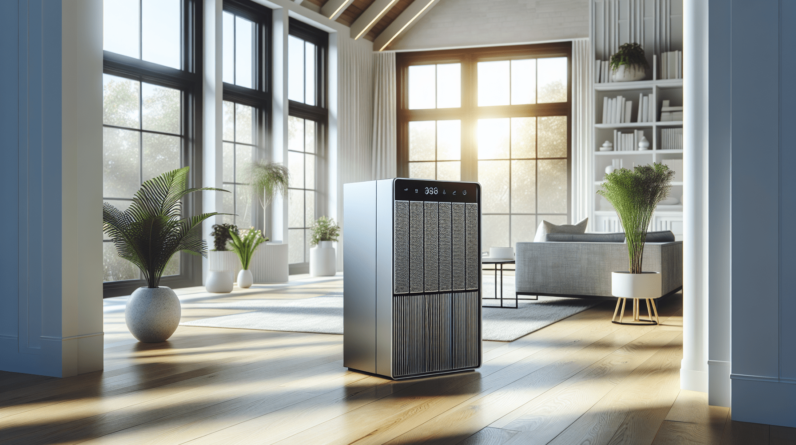

Have you ever wondered how your air conditioner manages to keep your space cool and comfortable during those hot summer days? One of the essential components that plays a significant role in the functioning of your air conditioning unit is the capacitor. Understanding capacitors can give you insight into how your air conditioner operates and why regular maintenance is crucial.

What Is a Capacitor?
A capacitor is an electrical component that stores electrical energy temporarily. It consists of two conductive plates separated by an insulating material called a dielectric. When you charge a capacitor, it holds voltage across its plates, which can then be used in various applications, including HVAC systems.
In an air conditioning system, capacitors are used primarily for starting and running motors, particularly in the compressor and fan. Understanding the functionality of these capacitors can enhance your knowledge of your air conditioning system.
The Role of Capacitors in Air Conditioners
Capacitors are critical for the optimal performance of your air conditioner. Their primary purpose is to provide the necessary energy boost to start the compressor and the fan. Let’s break down their roles further.
Starting Capacitors
Starting capacitors are designed to provide an additional surge of current to the compressor motor when you first turn on your AC unit. This helps the motor to overcome inertia and start running. Once the motor reaches a certain speed, the starting capacitor opens and becomes inactive.
Running Capacitors
Running capacitors, on the other hand, remain in the circuit while the air conditioner is operating. They help to maintain an efficient and stable operation by improving the power factor. A well-functioning running capacitor allows for smooth operation of the compressor, leading to better energy efficiency and prolonged equipment life.
Why Are Capacitors Important?
Understanding the importance of capacitors in your air conditioning system can help you appreciate their role in enhancing performance and energy efficiency. Here’s why they matter:
Energy Efficiency
Capacitors contribute to the energy efficiency of your air conditioning system by ensuring that the motor runs smoothly. A well-functioning capacitor can help minimize energy consumption and reduce your electricity bills.
Reliability and Longevity
Capacitors play a significant role in the reliability of your air conditioning unit. A failing capacitor can lead to motor burnout, which may result in expensive repairs or even a complete replacement of the unit. Regular maintenance and timely replacements of worn-out capacitors can prolong the life of your air conditioning system.
Optimal Performance
When capacitors function correctly, you will notice improved cooling performance in your space. They ensure that the compressor and fan operate at their best, maintaining the desired temperature without excessive cycling.
Signs of a Failing Capacitor
Recognizing the signs of a failing capacitor can save you from dealing with uncomfortable temperatures and costly repairs. Here are some common symptoms that indicate capacitor issues:
1. The Air Conditioner Won’t Start
If your air conditioning unit doesn’t start when you turn it on, it might indicate a problem with the starting capacitor. This situation can prevent the compressor from getting the necessary kick to begin operation.
2. The Unit Shuts Off Unexpectedly
If your AC unit starts but then shuts off unexpectedly, it could be due to the running capacitor not maintaining the required voltage. This issue can lead to overheating and damage to the compressor or motor.
3. Humming Noise from the AC Unit
A humming noise often signifies that the capacitor is trying to start the motor but failing to do so. This problem can indicate a mechanical failure or a capacitor that is nearing the end of its life.
4. Poor Airflow
If you notice reduced airflow or inconsistent cooling, it might be due to a malfunctioning running capacitor. A weak capacitor may not provide the necessary power for the fan, resulting in lower airflow.
5. Visible Signs of Damage
Inspecting your capacitor can reveal visible signs of damage, such as bulging or leaking fluid. If you notice any physical abnormalities, it is crucial to replace the capacitor promptly.
How to Test a Capacitor
If you suspect that a capacitor might be failing, testing is essential to confirm your suspicions. While some homeowners prefer to hire professionals, you also can conduct simple tests yourself. Just remember to prioritize safety when handling electrical components.
Step 1: Turn Off Power
Before any testing, ensure that the power to the air conditioning unit is completely turned off. This step is critical for your safety.

Step 2: Discharge the Capacitor
Discharging a capacitor is essential to prevent electrical shock. Use an insulated screwdriver to carefully short across the terminals of the capacitor. This step will safely release any stored power.
Step 3: Use a Multimeter
With the capacitor discharged, you can use a multimeter to test its capacitance. Set the multimeter to the capacitance setting and connect the leads to the terminals of the capacitor.
Record the reading and compare it to the capacitor’s specified rating, which is usually printed on the side of the component. A significant deviation may indicate a need for replacement.
Step 4: Inspect for Physical Damage
While testing, also visually inspect the capacitor for any signs of physical damage, such as bulges, cracks, or leaks. If you notice damage, it’s best to replace the component.
Step 5: Replace if Necessary
If your tests indicate a failing or damaged capacitor, it’s time to replace it. Component replacement will ensure the continued operation of your air conditioning unit.
How to Replace a Capacitor
If you’ve determined that a capacitor needs to be replaced, the following steps will guide you through the process. However, if you’re not confident in your ability to perform electrical work, it’s wise to hire a professional.
Step 1: Gather Tools and Materials
Before you begin, gather the necessary tools, including a screwdriver, insulated gloves, a multimeter, and a replacement capacitor.
Step 2: Turn Off Power
Just as before, make sure you turn off the power to your air conditioning unit before starting any replacement work. You can do this by shutting off the circuit breaker.
Step 3: Locate the Capacitor
The capacitor is typically found in the compressor unit, which may involve removing a cover panel. Make sure to take necessary precautions to protect yourself while working.
Step 4: Remove the Old Capacitor
Carefully disconnect the wires from the terminals of the old capacitor. Take note of the wiring configuration, as you will need to replicate it with the new component.
Step 5: Install the New Capacitor
Position the new capacitor where the old one was located. Connect the wires according to the configuration you noted earlier, ensuring secure connections.
Step 6: Power On the Unit
Once the new capacitor is installed, replace the cover panel if necessary, and restore power to the air conditioning unit. Test the system to ensure it is operating correctly.

Choosing the Right Capacitor for Your Air Conditioner
When it comes to selecting the right capacitor for your air conditioning unit, it’s essential to choose one that matches the specifications of your system. You wouldn’t want to risk damage by using an incorrect component. Here’s what to consider:
1. Capacitor Type
Identify whether you need a starting capacitor, running capacitor, or both based on your air conditioning system’s requirements.
2. Capacitance Value
Check the capacitance value required for your air conditioner, which is typically measured in microfarads (µF). This information is usually printed on the side of the existing capacitor.
3. Voltage Rating
Ensure that the voltage rating of the replacement capacitor meets or exceeds that of the original component. Using a lower voltage capacitor can lead to failure.
4. Physical Size
Make sure that the replacement capacitor fits within the space allocated in your air conditioning unit. A capacitor that is too large may not fit properly.
5. Brand Compatibility
It’s also a good idea to check for compatibility with your air conditioning brand. While generic capacitors might work, opting for OEM (Original Equipment Manufacturer) components can be beneficial for performance.
Maintenance Tips for Capacitors
Preventative maintenance can significantly enhance the lifespan of your air conditioning system, particularly its capacitors. Here are some tips to keep in mind:
Regular Inspections
Schedule regular inspections of your air conditioning unit to check for signs of capacitor wear. Noticing issues early can prevent catastrophic failures.
Cleanliness Matters
Ensure that the areas around capacitors are clean to prevent dust buildup, which can lead to overheating and component failure. Wipe down the surfaces with a soft cloth during your routine maintenance.
Monitor Performance
Keep an eye on your air conditioning unit’s overall performance. If you notice any changes in cooling efficiency or operation, it may indicate a capacitor issue.
Be Proactive with Replacements
If you’ve experienced frequent capacitor failures, consider being proactive with replacements. Even if a capacitor appears to be functioning, it may be helpful to switch it out during regular maintenance.
Conclusion
Your air conditioning system relies heavily on the functionality of capacitors to operate smoothly and efficiently. Understanding their roles, how to identify signs of failure, and knowing how to replace them can be beneficial for every homeowner. With some basic knowledge and preventive maintenance, you can ensure that your air conditioner continues to provide comfort for many seasons to come.
Finding the right balance between DIY maintenance and knowing when to call in professionals can maximize the lifespan and effectiveness of your HVAC system. So, take the time to learn about capacitors and keep your air conditioning unit in top shape!






